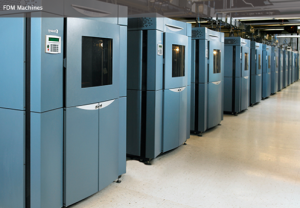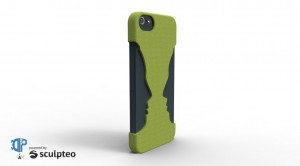A colleague recently forwarded me a Forbes article that talked about 3D Printing as a service. I agree with the author that while 3D printing machine prices make owning a machine out of the question for many consumers, there is a huge market for on-demand printing. The ability to take a file and digitally send it to a service house for creation allows even amateurs the opportunity to use these services, though to varying degrees. An ability to design the item that you want and to customize it will further allow consumers to engage with additive manufacturing as an emerging service market.
![]() One of the companies mentioned in the article, Shapeways, specializes in printing as a service. They have the ability to print things in a wide variety of materials (each materials has it’s own pricing). It is a service designed for all. The variety of materials allows them to create custom everything from jewelry to toools, to simple gadgets. In an interview, Co-Founder Peter Weijmarshausen (who is a speaker at the upcoming Inside 3D Printing Conference) said
One of the companies mentioned in the article, Shapeways, specializes in printing as a service. They have the ability to print things in a wide variety of materials (each materials has it’s own pricing). It is a service designed for all. The variety of materials allows them to create custom everything from jewelry to toools, to simple gadgets. In an interview, Co-Founder Peter Weijmarshausen (who is a speaker at the upcoming Inside 3D Printing Conference) said
“If you are a maker, a designer, a creative problem solver, you can design in 3d software anything you want, you can upload it to Shapeways and then we can turn that design into a real product.
Other sites exist that allow for similar customization. Sculpteo is a marketplace where designers can upload custom files and earn money when their designs are sold. This works to the benefit of both the consumer and the creator. An average user does not have to learn how to do high end CAD modeling, instead they simply plug in a few words or graphics to personlize an item. Maybe surprisingly the cost of these models is competitive with real products. Things like iPhone cases vary from $12-$70+ on Sculpteo.
A library of existing parts helps to differentiate Sculpteo and Shapeways but these are not the only sites where you can get something printed for a price. It seems there is little barrier to entry in the printing services market. Anyone capable of running a machine and organizing a stable web based market place has the opportunity to open up shop. iMateralise uses the site as something of a front end for various CAD tools and modeling services. A portion of their page directs users to TinkerCad, Autodesk, and Sketchup all of which can be used to create or customize parts.
Another of the major service sites is Ponoko. Also designed to allow users to monetize their designs, Ponoko opens up more than just 3D printing and includes laser cutting, forming and more.
Currently a major barrier to 3D printing is not just access to the machines but the knowledge of how to create something useful for printing. As these tools continue to become more user friendly the market for services like this will only grow, but what about the professional market. Many industrial applications do not require the slick web design and one click purchases of consumer facing sites.
The previously mentioned sites help bring printing to a consumer market but there is as large (if not larger) a market for professionals who require prototyping services. Organizations both small and large spend a great deal of money fabricating items for research, testing, and presentations. For these professionals still other 3D Printing service companies exist.
 |
| RedEye Production Floor |
Redeye is owned by Stratasys, a valuable 3D Printing company. The service offering for them creates a number of advantages. Customers who require printing services are likely to use it more than once and for those using it for prototyping it is possible they will one day need larger manufacturing capabilities. In that case Redeye serves as the first interaction with what could potentially be a huge account for Stratasys.
Not to be outdone 3D Systems, the other major player in 3D printing machines, has their own service arm. Quickparts works in much the same way but expands the offer beyond just 3D printed parts into true injection molded components. This allows them to take slightly larger orders that would require multiple prints. Likely one day there will be a printer large enough to churn out 1000 piece orders but until then 3D Systems continues to engage with the engineers and designers who have use for such things.
Even more printing service companies exist today and more are likely to pop up in the coming years. As printer owners find new uses for idle machine time and CAD vendors create tools consumers can use these service houses could spring up practically anywhere. And with talk of a chocolate printer hitting the market this year who knows what bakery or office supply store may become the new print center.




This comment has been removed by the author.